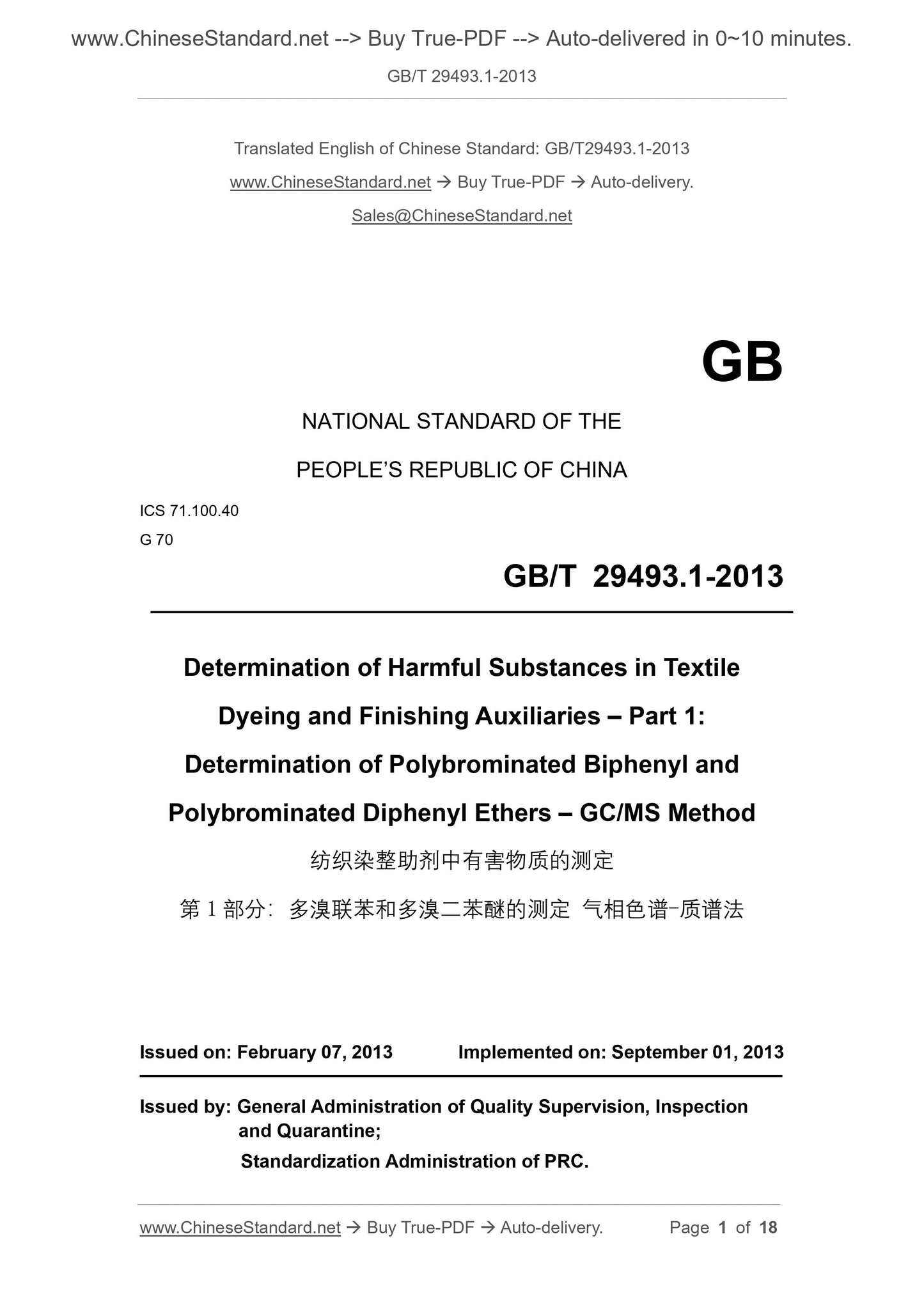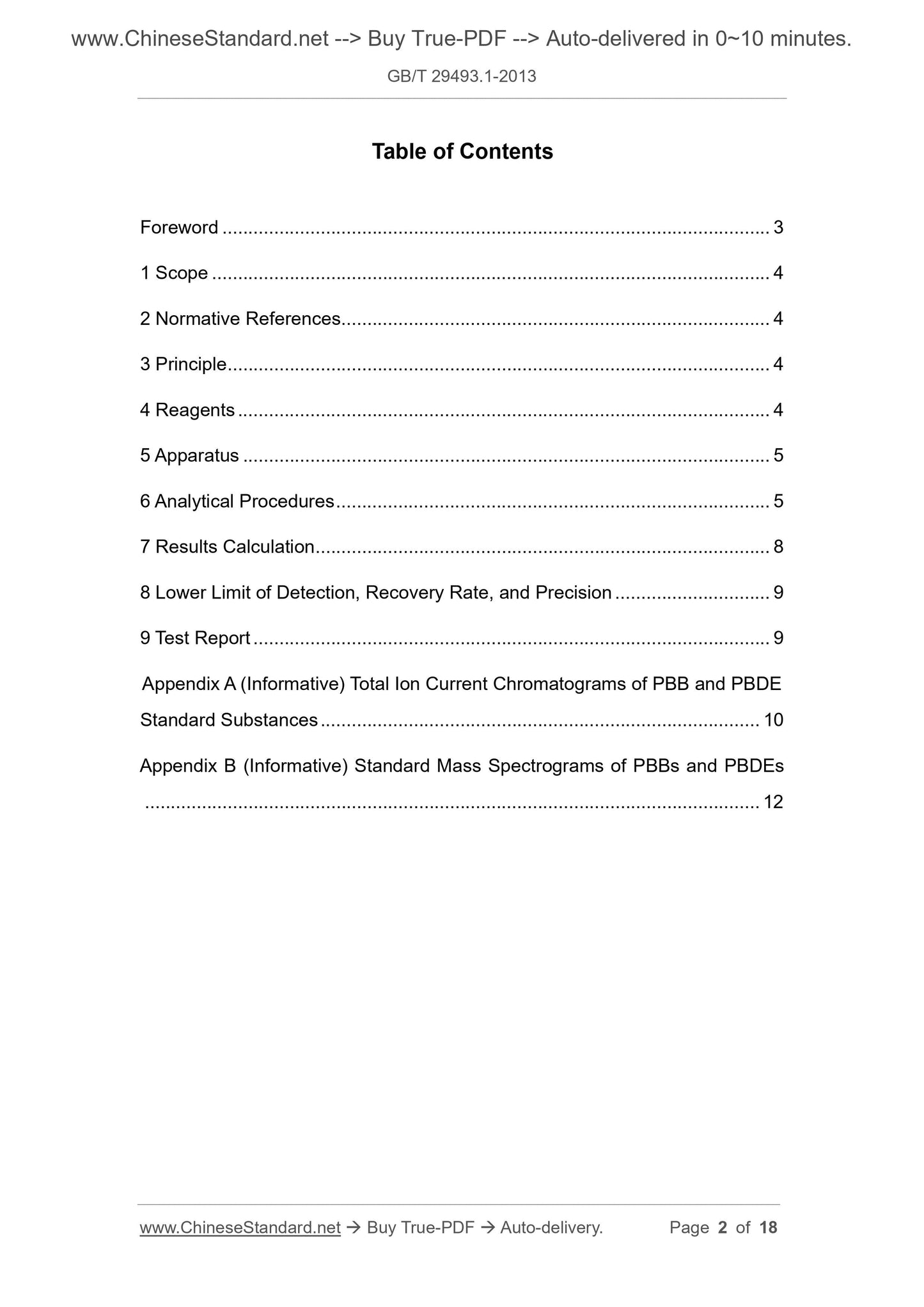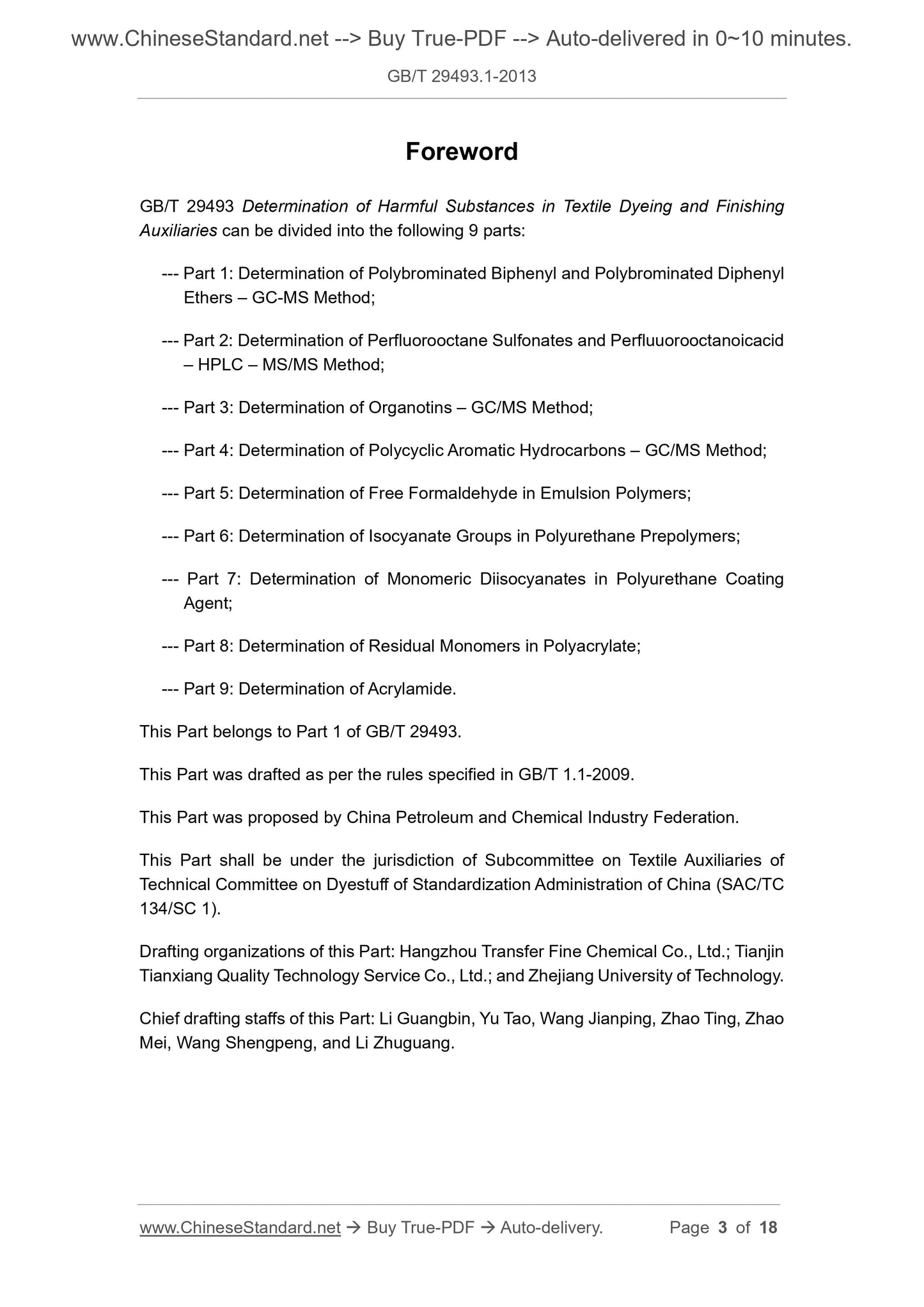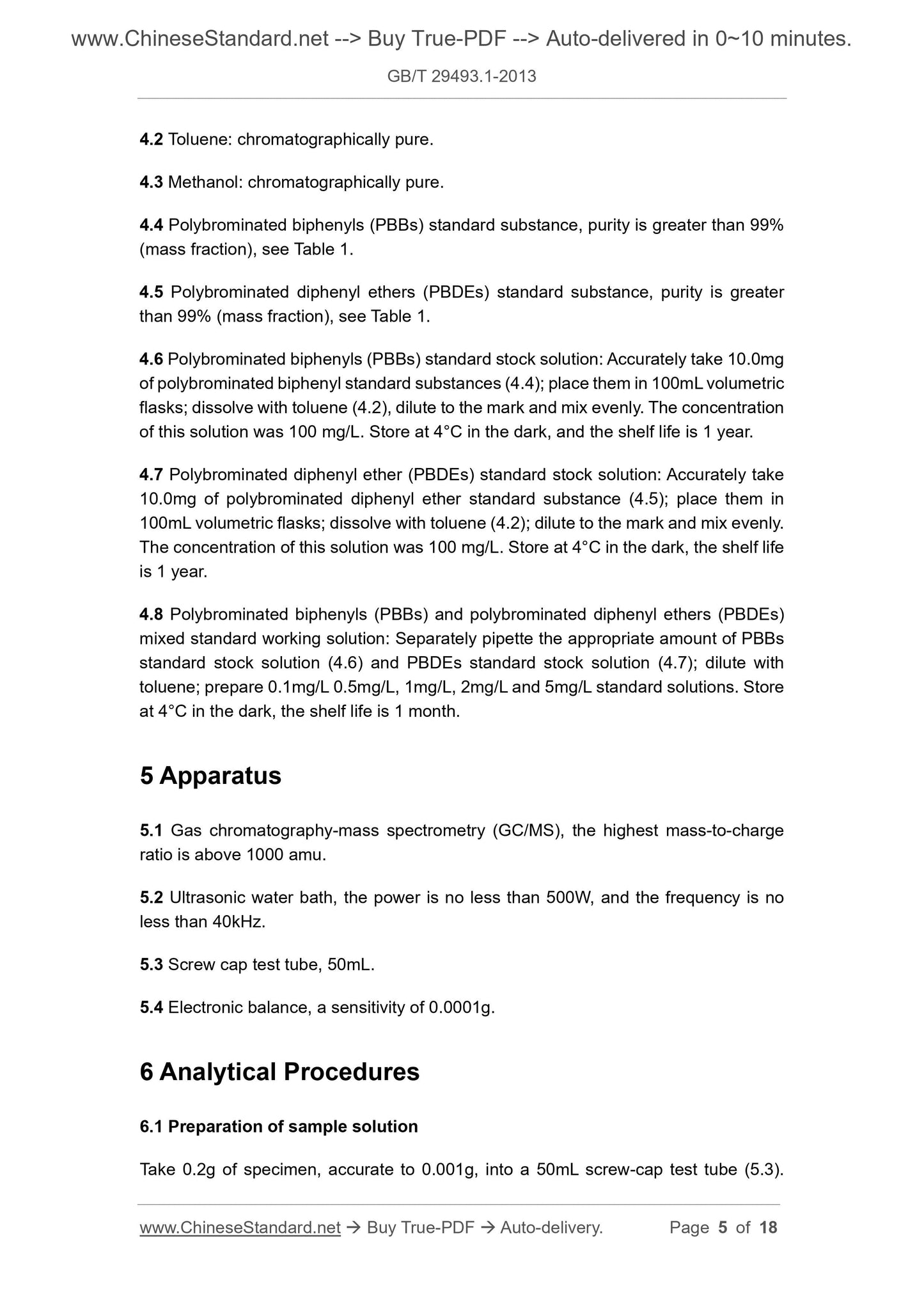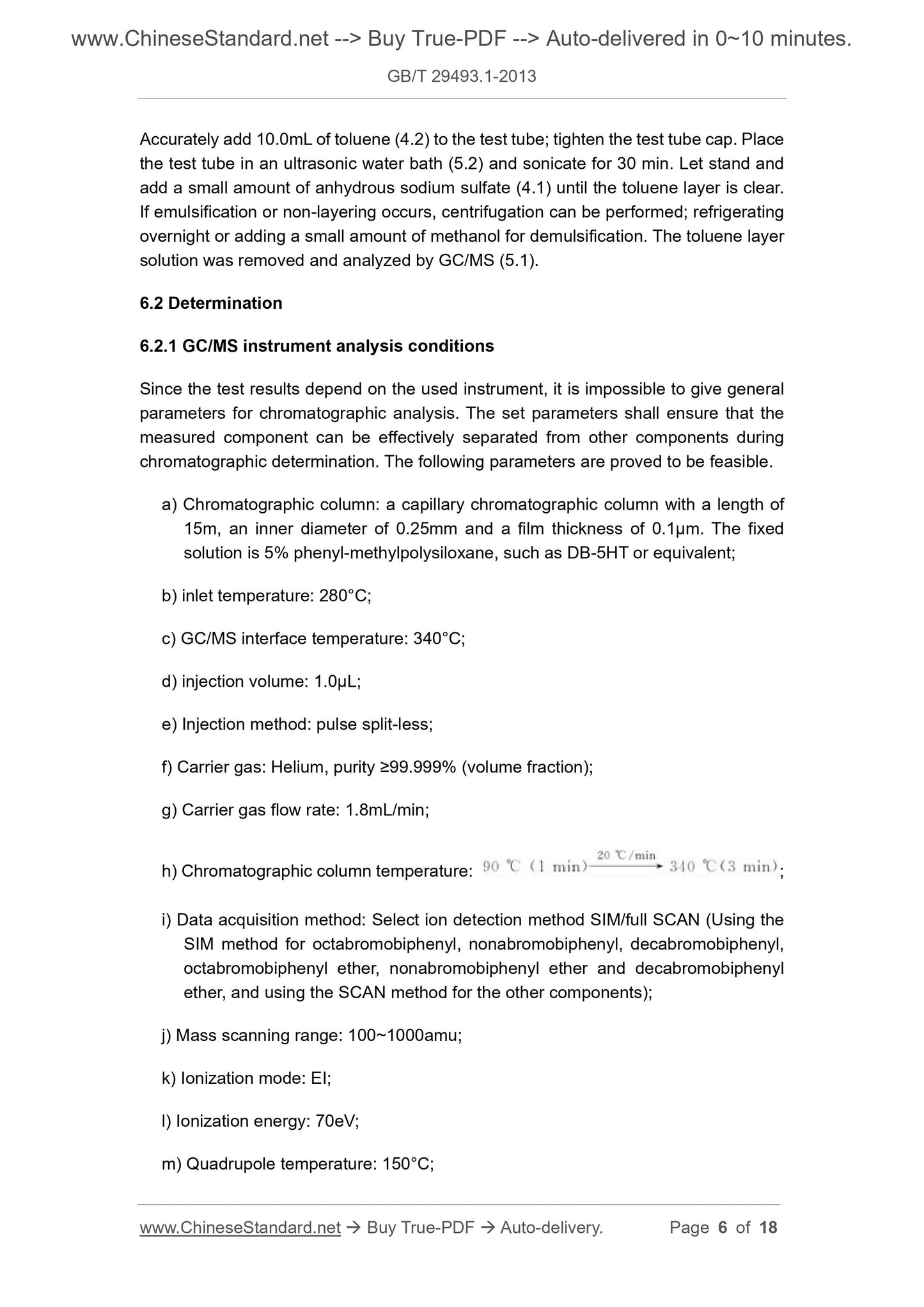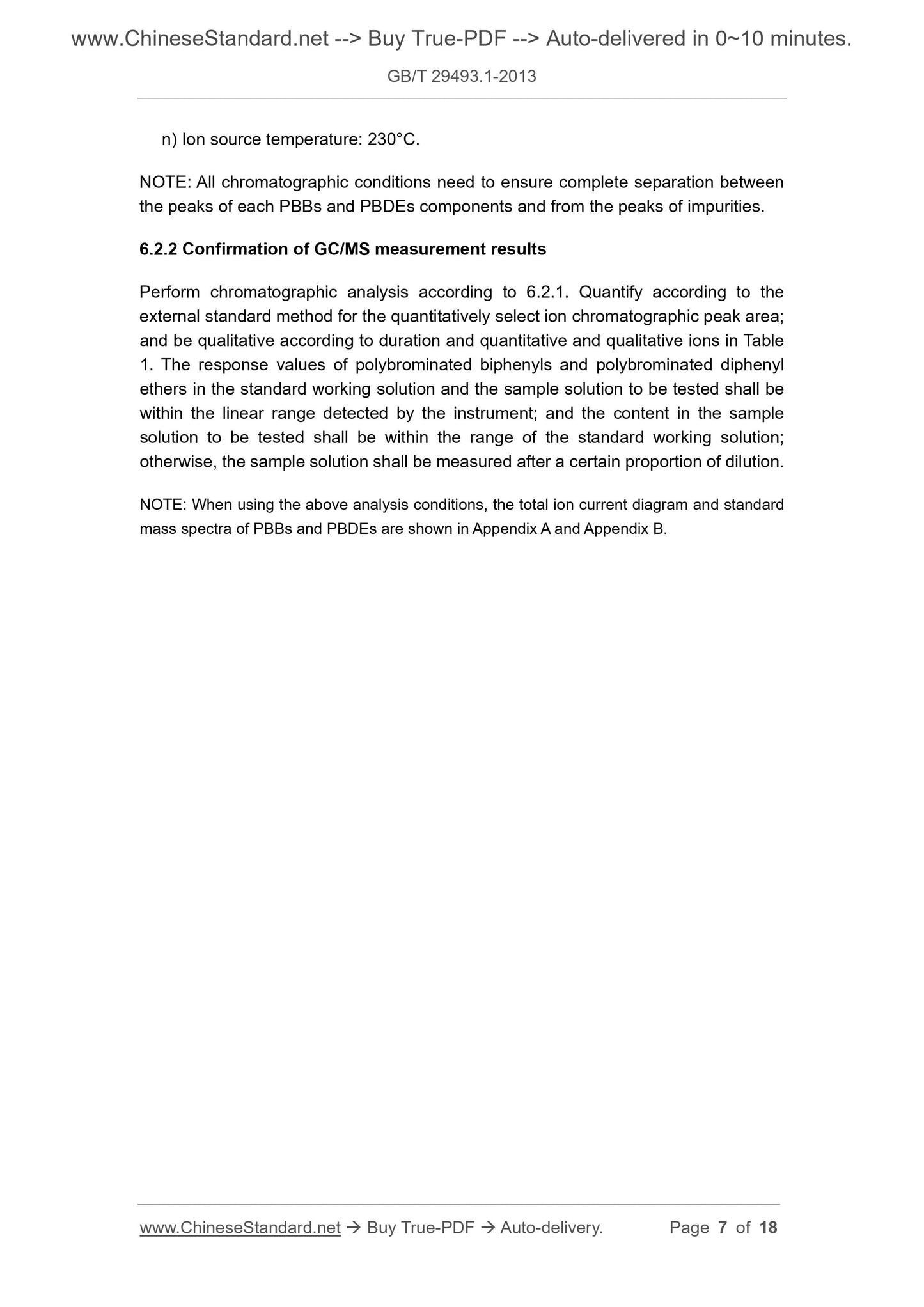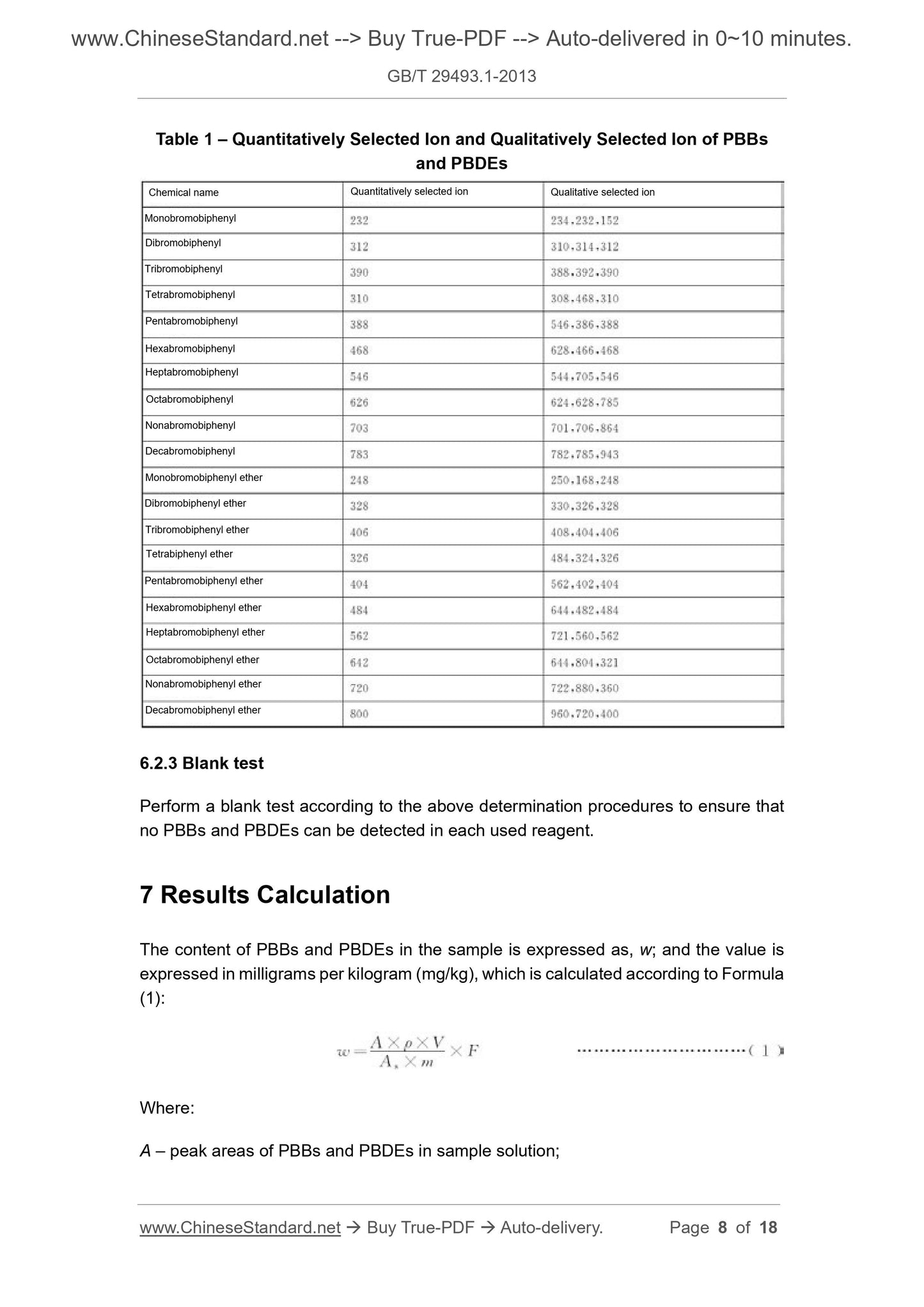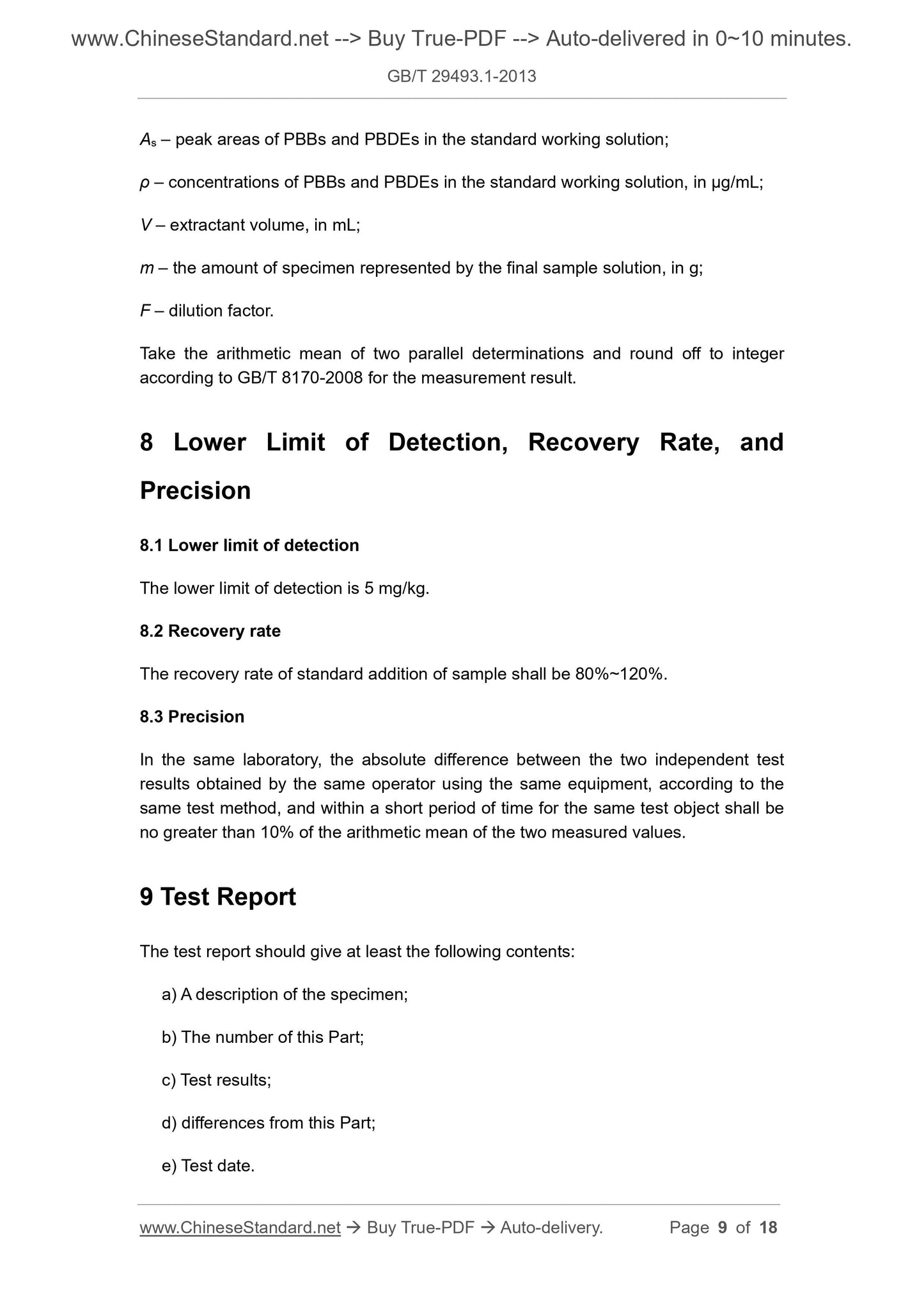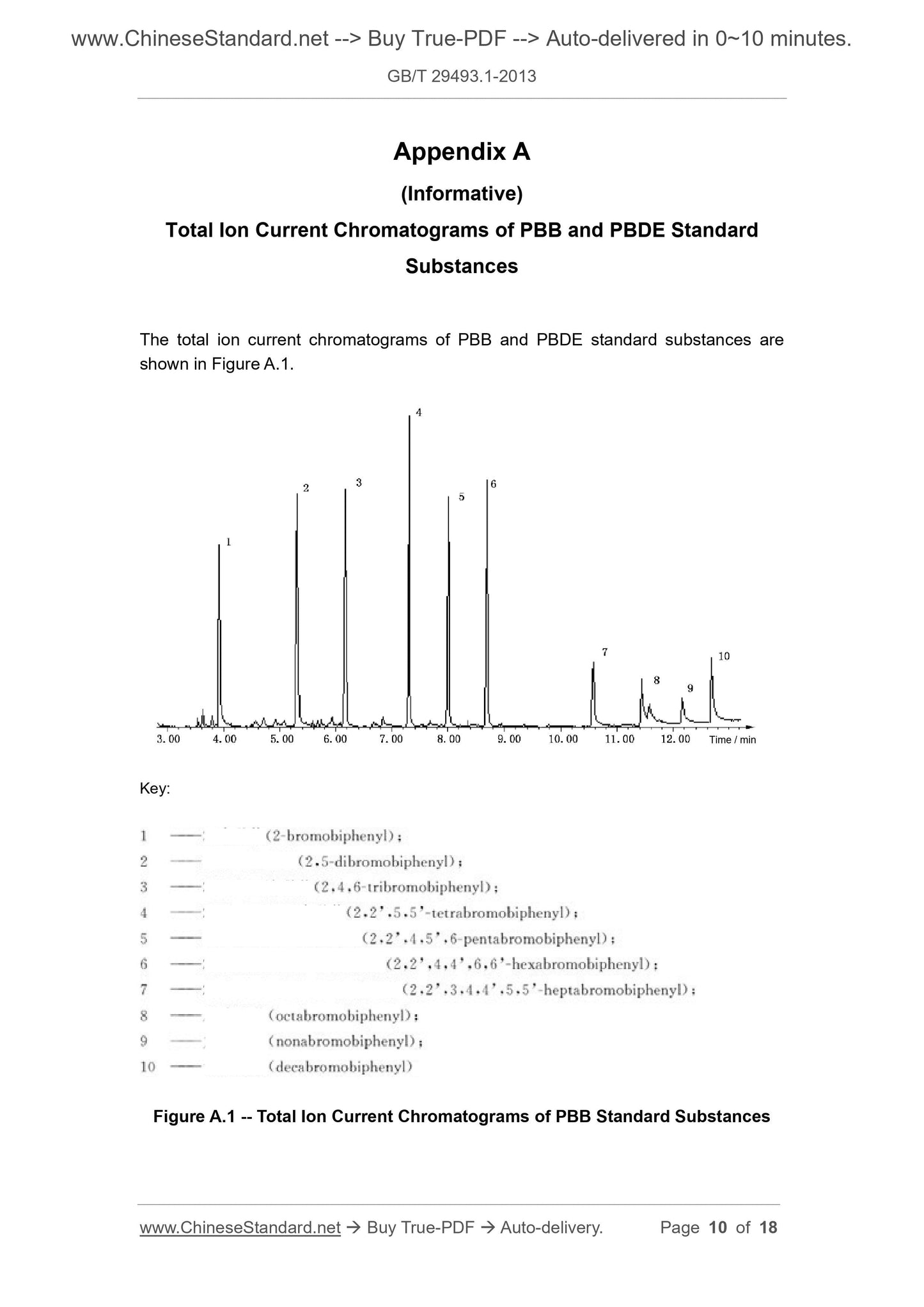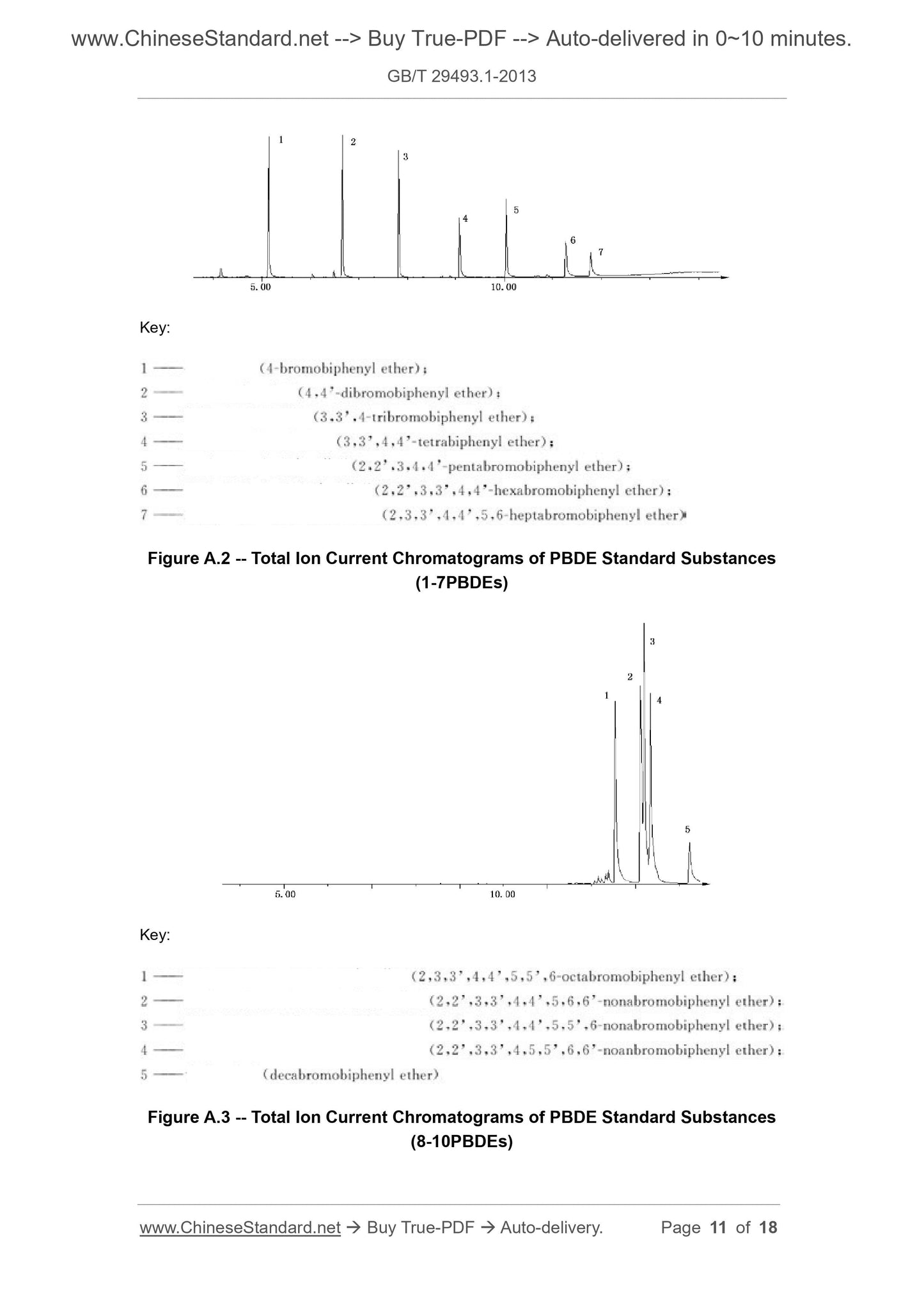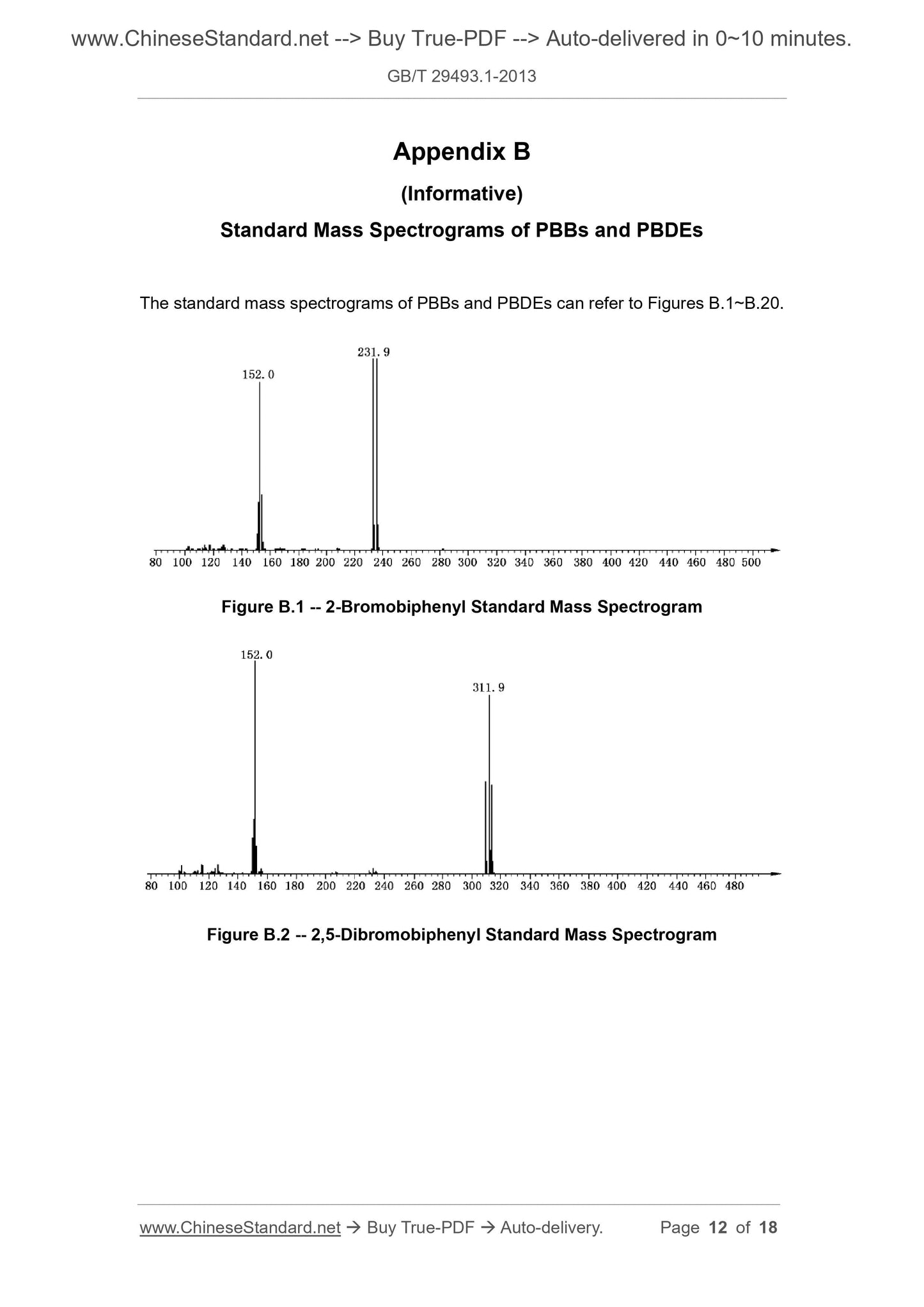1
/
of
12
PayPal, credit cards. Download editable-PDF and invoice in 1 second!
GB/T 29493.1-2013 English PDF (GB/T29493.1-2013)
GB/T 29493.1-2013 English PDF (GB/T29493.1-2013)
Regular price
$170.00
Regular price
Sale price
$170.00
Unit price
/
per
Shipping calculated at checkout.
Couldn't load pickup availability
GB/T 29493.1-2013: Determination of harmful substances in textile dyeing and finishing auxiliaries -- Part 1: Determination of polybrominated biphenyl and polybrominated diphenyl ethers -- GC/MS method
Delivery: 9 seconds. Download (and Email) true-PDF + Invoice.Get Quotation: Click GB/T 29493.1-2013 (Self-service in 1-minute)
Newer / historical versions: GB/T 29493.1-2013
Preview True-PDF
Scope
This Part of GB/T 29493 specifies using the gas chromatography-mass spectrometry(GC/MS) method for the determination of polybrominated biphenyls and
polybrominated diphenyl ethers in textile dyeing and finishing auxiliaries.
This Part is applicable to the determination of polybrominated biphenyls and
polybrominated diphenyl ethers in textile dyeing and finishing auxiliaries.
Basic Data
| Standard ID | GB/T 29493.1-2013 (GB/T29493.1-2013) |
| Description (Translated English) | Determination of harmful substances in textile dyeing and finishing auxiliaries -- Part 1: Determination of polybrominated biphenyl and polybrominated diphenyl ethers -- GC/MS method |
| Sector / Industry | National Standard (Recommended) |
| Classification of Chinese Standard | G70 |
| Classification of International Standard | 71.100.40 |
| Word Count Estimation | 16,118 |
| Quoted Standard | GB/T 8170-2008 |
| Regulation (derived from) | National Standards Bulletin 2013 No. 2 |
| Issuing agency(ies) | General Administration of Quality Supervision, Inspection and Quarantine of the People's Republic of China, Standardization Administration of the People's Republic of China |
| Summary | This standard specifies the gas chromatography mass spectrometry (GC/MS) determination of textile dyeing and finishing auxiliaries polybrominated biphenyls and polybrominated diphenyl ethers approach. This section applies to the textile dyeing and finishi |
Share
